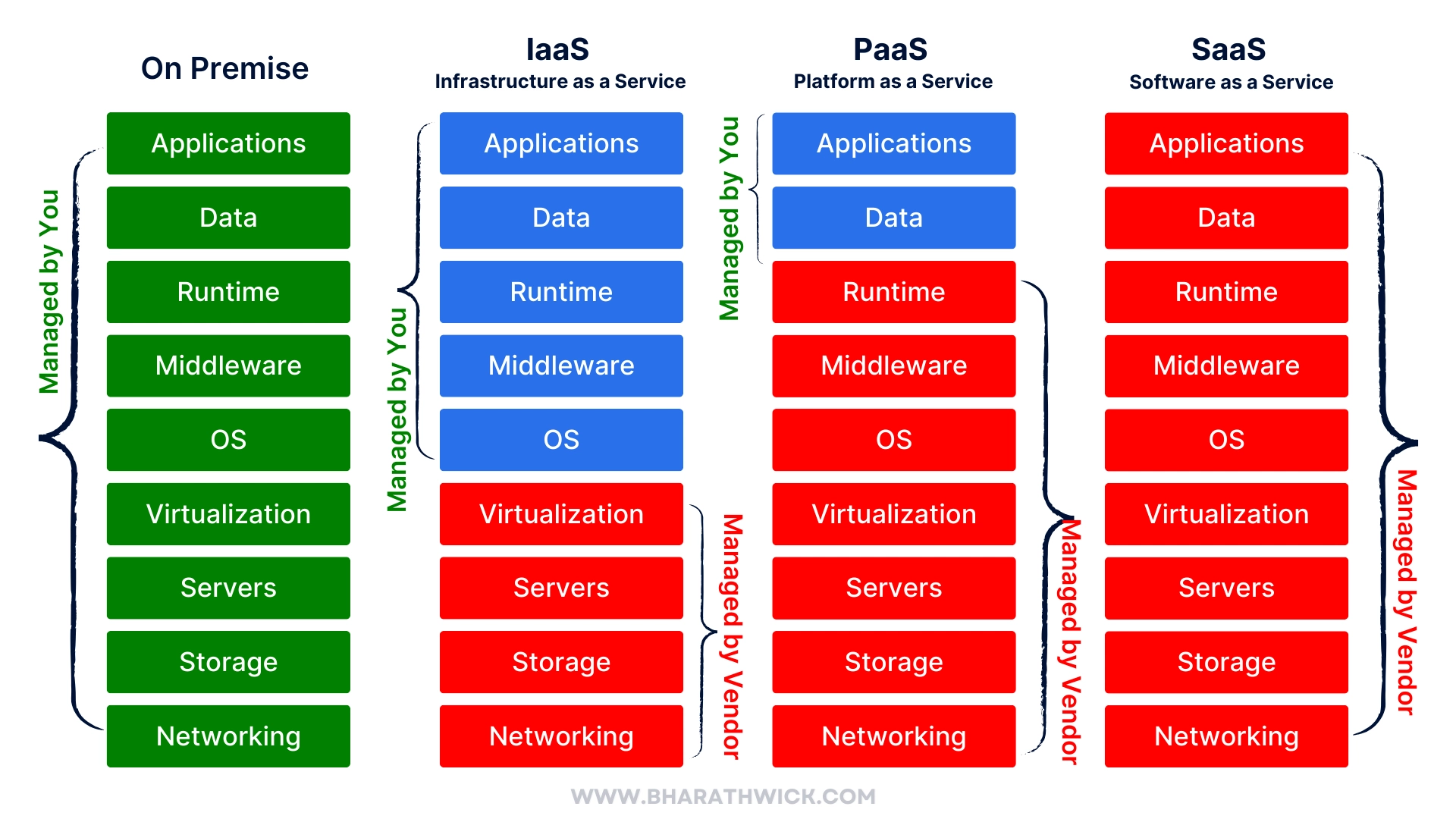PaaS is a way for developers to create and manage applications on the internet without worrying about the complicated technical side of things. It provides them with tools and programming languages to focus on writing the code for their applications. This simplified approach allows developers to concentrate on what they do best: building and deploying applications on the cloud.
How PaaS Works
Platform as a Service (PaaS) plays a crucial role as a middleware layer that sits between the underlying infrastructure and the software applications. It offers a comprehensive suite of tools and services that are essential for application development.

These include runtime environments, databases, web servers, and integration capabilities. PaaS enables developers to focus on building and deploying applications without worrying about the underlying infrastructure.
With PaaS, developers can deploy applications faster, reduce development costs, and scale applications easily. Additionally, PaaS providers offer a range of features such as auto-scaling, load balancing, and security measures to ensure that applications are always available, performant, and secure.
With PaaS, developers can build and test their applications without worrying about the technical details of hardware and software. They can access these resources through a web-based interface or command-line tools. PaaS providers handle all the underlying infrastructure, ensuring that the applications can scale, are always available, and are secure.
Key Components of PaaS
Runtime Environment: PaaS is a platform that helps developers write code in the language they are most comfortable with. It’s like having a pre-set workspace with all the tools needed to get started. This way, they can focus on writing code instead of worrying about setting up their environment.
Development Tools: PaaS is a type of technology that helps software developers create and improve applications. It comes with various useful tools that make the development process easier and faster. These tools include things like code editors, debugging tools, and integrated development environments (IDEs). By using PaaS, developers can create, test, and modify their applications more efficiently.
Database Management: PaaS makes it easy for developers to save and find information by providing specialized database management tools. These databases can hold different types of data and are designed to work together smoothly.
Scalability and Load Balancing: PaaS is a tool that helps your applications work smoothly even when many people are using them simultaneously. It makes sure that your app has enough space to work and keeps things running quickly and smoothly.
Deployment and Hosting: PaaS is a helpful tool for developers who want to put their applications online without dealing with complicated server setups. It’s basically a cloud-based platform where they can easily publish and manage their apps. This makes it simpler and faster to get their work done.
Most Popular PaaS Providers
Many companies provide a variety of services called PaaS. Each service has its own special features and abilities. Below are some of the most well-known PaaS providers.
Heroku: If you’re looking for an easy-to-use cloud platform, Heroku is a great option. It can handle different programming languages, like Java, Ruby, Node.js, and Python. Many startups and smaller projects use it because it works well with other services. Overall, Heroku is a solid choice if you need a simple, reliable cloud platform.
Google App Engine: App Engine is a platform created by Google that helps people build and host web applications. You can use different programming languages and tools like Java, Python, PHP, and Go to create your web app. App Engine is useful because it can adjust how much computing power is needed depending on how many people use your app. It can balance the traffic across multiple servers to keep everything running smoothly. Plus, it’s easy to use with other Google services.
Microsoft Azure: Azure is a platform that offers many useful tools for developers and businesses. It supports multiple programming languages like .NET, Java, Python, and Node.js. It offers many services, such as virtual machines, databases, AI, and analytics. Azure is popular among businesses and developers because it works well with other Microsoft tools and services.
AWS Elastic Beanstalk: Elastic Beanstalk is a service provided by Amazon Web Services (AWS) that helps developers deploy and scale their applications easily. It works with different programming languages like Java, .NET, Node.js, and PHP and integrates smoothly with other AWS services. This makes it a flexible and scalable platform for developers to work on.
Advantages of PaaS
There are many benefits to using PaaS, which stands for Platform as a Service. This technology is great for both developers and businesses. Some of the top advantages of PaaS include:
Faster Development: PaaS is a helpful tool for developers that allows them to use ready-made environments and tools to create and launch applications faster. This helps them work more efficiently and be more flexible with their work.
Scalability and Flexibility: When building software applications, it’s important to make sure they can handle changes in demand without slowing down or crashing. PaaS providers take care of this automatically, so developers don’t have to monitor and adjust the app’s performance constantly. This means that the app can easily handle more users or traffic without any extra effort from the developer.
Cost Efficiency: With PaaS, businesses can spend a little money upfront to set up their computer systems. Instead, they can use a service provider who takes care of maintaining the hardware and software. This means businesses only pay for what they actually use, which can help save money in the long run.
Enhanced Collaboration: It helps developers work together more efficiently. They can all work on the same project and share their work with each other. This makes it easier to keep track of changes and deploy the project when it’s ready.
Reduced IT Complexity: It helps developers concentrate on creating applications without worrying about the technical details of the underlying infrastructure. This simplifies the development process and reduces the workload of IT teams.
Disadvantages of PaaS
Before you decide to use PaaS for developing your applications, it’s important to know that there are some potential downsides to consider. One of the main things to keep in mind is that PaaS has its limitations and drawbacks. It’s essential to be aware of these before you start using it. Some possible disadvantages include:
Limited Control: PaaS is a way of managing computer systems that make things easier for developers. However, some things that developers might want to do are not possible. This is because PaaS takes care of a lot of the technical stuff behind the scenes, which can limit what developers can do.
Vendor Lock-In: Moving your apps from one platform to another can be tough because they often rely on certain features specific to that platform. This can make it difficult to switch to a different provider or use new technology down the line.
Security and Compliance Concerns: When different applications and data are stored together, it’s important to think about security and follow the rules. The people who provide the platform where your applications are stored will have some security measures in place, but it’s up to businesses to ensure their own applications follow the rules.
Dependency on Provider Reliability: When we use certain apps, we depend on a company to keep them running smoothly. If that company has problems on their end, it can cause the app to stop working or become hard to use. This is something we need to keep in mind when relying on technology.
Final Thoughts
PaaS is a helpful tool for developers who want to create and manage applications quickly and easily. It’s become very popular because it’s simple, flexible, and affordable. But before you decide to use PaaS, think about what you need and consider any potential problems that might come up.
